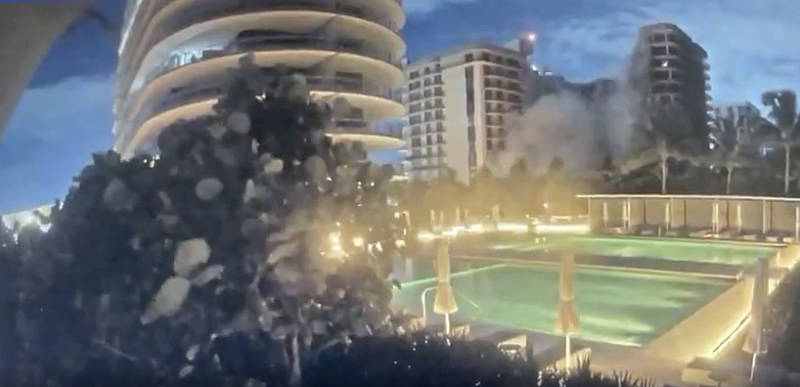It’s been reported today that the condo at Miami Beach that collapsed this morning has potentially been sinking into the ground for decades:
USA TODAY – A Florida high rise that collapsed early Thursday was determined to be unstable a year ago, according to a researcher at Florida International University.
The building, which was constructed in 1981, has been sinking at an alarming rate since the 1990s, according to a 2020 study conducted by Shimon Wdowinski, a professor in the Department of Earth and Environment.
When Wdowinski saw the news that the Champlain Towers South condominium in Surfside had collapsed, he instantly remembered it from the study, he said.
“I looked at it this morning and said, ‘Oh my god.’ We did detect that,” he said.
Wdowinski said his research is not meant to suggest certainty about what caused the collapse. The building was sinking at a rate of about 2 millimeters a year in the 1990s, and could have slowed or accelerated in the time since, he said.
In his experience, even the level of sinking observed in the 1990s typically results in impacts to buildings and their structures, Wdowinski said. He believes that very well could have been the case for the Champlain building in the 1990s, based on his findings.
“It was a byproduct of analyzing the data. We saw this building had some kind of unusual movement,” Wdownski said.
A building consulting engineer weighs in on the impacts of sinking:
Cracked walls or shifting foundations can be clues that sinking has affected the stability of a structure, according to Matthys Levy, a consulting engineer, professor at Columbia University and author of “Why Buildings Fall Down: How Structures Fail.”
There is always concern for structures built on reclaimed land, according to Levy.
Reclaimed land, whether landfill or wetlands, can compact over time, leading to shifts in the ground under the building and potentially to the foundation.
“A milliliter may seem like a small number, but when you add them up over many years it becomes a big number,” Levy said.
The building could have been especially vulnerable if the ground it was situated on was sinking at different rates, causing differential settlement.
“The fact that one part of it is still standing is important. The portion that collapsed might have been tipping compared to the other portion, which may not have been sinking as fast. So you have an unequal situation and in between things begin to crack and tilt,” Levy said.
“There has to be some trigger that occurs. If you have two parts of a building and one part is well founded and doesn’t move that much and the other is not, then between the two you get movement. That can cause distortion in the floor slabs, they can begin to crack, suddenly you get cracking, breaking and fracturing,” he said.
That leads to what’s known as progressive collapse, when one part fails, and then another and another until the entire structure fails. That is what happened to the World Trade Center after the 9/11 attacks, he said.
“Buildings are not super strong; they’re not built to sustain an unusual event like this,” he said.
“If one part of the building fails, it drags the rest with it,” he said. “It just continues, you can’t stop. There’s nothing there to stop it, there’s no strong elements to hold it back. It’s a cascade.”
If the building was sinking in the 90s and continued to sink until now, then I think we have our answer for why it collapsed. But there’s going to be hell to pay if the city ignored this problem or kicked the can down the road on this.

